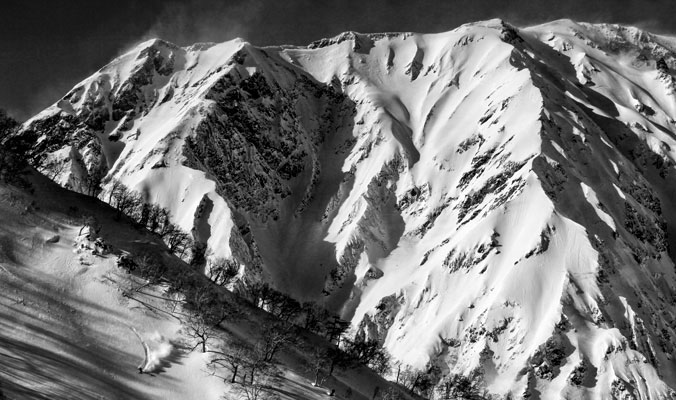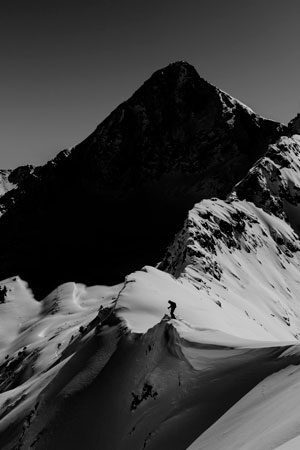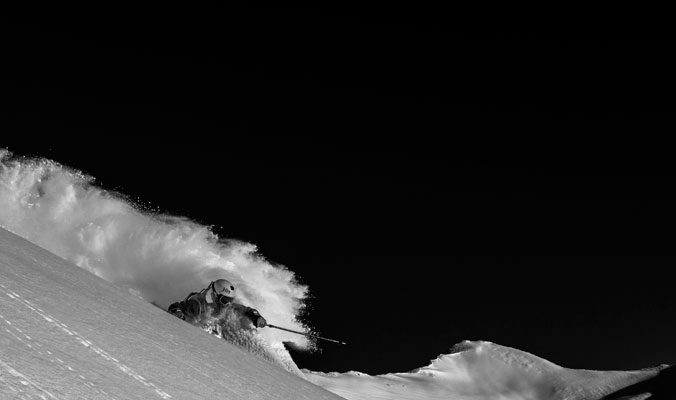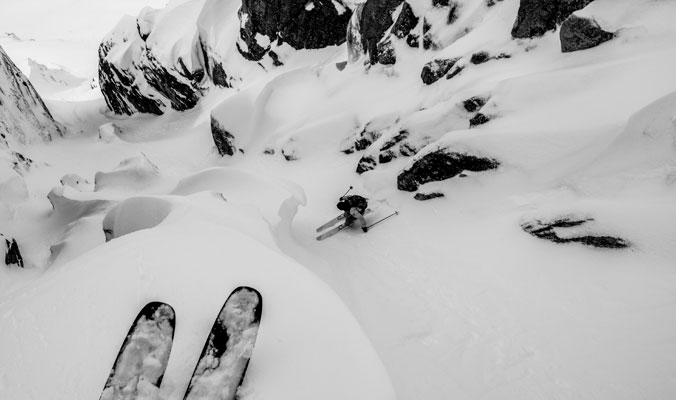
After two hours of climbing steadily uphill, we pause on the ridgeline. All is quiet—no labored breathing, no squeak of bindings or whoosh of pant legs passing, no sifting of snow sliding into the cut bank of the skintrack. The air is still, and neither a tree bow bends nor a bird or squirrel moves through the forest. But across the valley, beyond the hardwood-walled alley that falls away from my ski tips, another world churns with a confusion of activity. A chairlift, just visible atop the ridge, deposits quartet after quartet of skiers onto squeaky, hardpacked snow, from where they’ll descend bounded runs, slaloming one another and markers that guard every obstacle along the way. That lift might be less than a mile away, but the distance feels immeasurable. The contrast is infinite.

The valley that divides the treeless pitch below me from the ridgetop chairlift is at once physical and something deeper. Where that on-piste slope is firm, crowded and restricted by arrows and markings and ropes, this slope is soft, populated only by me, my partner and our dog and restricted only by the way we imagine tracking the surface and threading around convexities and among trees. But the contrasts of the backcountry extend more deeply than the differences between these mountainsides. This place, this backcountry, is a culmination of contrasts.

Like with Newton’s third law of physics, every action in skiing has an equal and opposite. For every left turn, a right. For every uphill, a down. For every face shot, an effusion of joy. Most of skiing’s contrasts, however, are less tangible, less cause and effect, less action and reaction. The contrasts lie in the setting, the experience, the sounds and the snow. Like how an uptrack may roll as gently up a slope as does a line of descent, yet its apexes are punctuated by sharp zigs and zags. Or how a carved line disrupts an otherwise blank canvas, cleaving the surface with a dark stroke like an impermanent shadow of black on white. Or how each week, each month of winter is a constant evolution until the thin snowpack of December bears no resemblance to the car-height snowbanks of February that bear no resemblance to the consolidated layer cake of May. And then, before long, the earth is green and brown, and the idea that everything could be smothered in snow seems like a dream.

The gravity of these points of contrast—like the distance between this ridgetop perch, where I kneel sipping steaming tea, and the chairlift afar—only amplifies with distance and space. The cold crispness of the air makes this tea’s warmth as comforting as a down blanket. The tangled bushwhack to reach this place enhances the clarity of the lines below. The lows amplify the highs, and the level of effort magnifies the value of the reward. There’s beauty in these contrasts, in how they play off one another. Because without them, everything would be too similar.










Related posts: